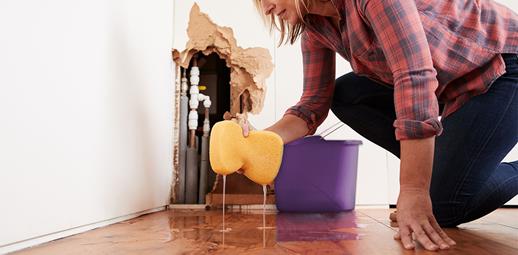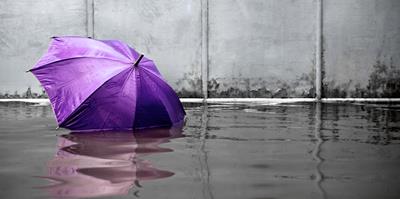
You can keep your home protected during winter by taking some time to prevent water leaks and bursts that could cause a lot of damage.
While water damage can happen at any time of the year, it’s particularly common after cold weather. If the pipes in your home get too cold, the water inside freezes, expands and can crack pipes or joints. When the ice thaws, you could be left with a leak.
A leak may not be noticeable at first but the damage can quickly spread.
So, how can you avoid water damage? Some steps to take during winter and beyond include:
Test your stop tap
Make sure you know where your internal stop tap (also known as an isolation valve or stopcock) is located. It’s the quickest way to stop a water leak. Test it by turning it on and off several times, as stop taps can seize up.
Turning the valve clockwise will close it, but it may take a few minutes for the water to stop altogether. If it won’t turn, contact a plumber to fix it.
Consider fitting a leak detector
Leak detectors monitor your usual water use and can turn off the water if they detect a leak.
Alternatively, you can use your water meter to check for leaks. Make sure nothing is using any water in your home, turn your stop tap off and note the reading. Then check again after one or two hours to see if the meter reading has changed. If it has, there may be a leak somewhere and it’s better to contact a plumber to check it.
Check pipes
Check pipes for leaks or drips. Look for split, dripping, rusting or oxidised pipes and joints, and run the taps to make sure that water is free flowing. If the flow is restricted or intermittent, check with a plumber in case there is hidden damage.
Are you unsure which of the pipes in your home carry water and which carry gas? Check by running the taps and if the pipe vibrates or makes a sound when the water is running, then it’s a water pipe [1].
Repair dripping taps
It’s important to get leaky taps, showers and toilets fixed by a plumber, as even small trickles of water can lead to frozen pipes.
Garden and outdoor taps are vulnerable to the cold, too, so cover them up in winter to protect them.
Check your lagging
All pipes and tanks in loft spaces and other draughty areas, such as garages and outbuildings, could risk freezing. So, ensure they are fully covered with lagging, which is a type of foam tubing. You can buy this cheaply online, easily cut it to size and wrap it around your pipes to protect them.
If you have water pipes in the loft, then to help prevent them from freezing in very cold weather, you could open the loft hatch to let warm air from other parts of the house circulate.
What to do if your pipes are frozen
If your pipes freeze, turn off your water at the stop tap. Then thaw the frozen pipes using a hairdryer, hot water bottle or towels soaked in hot water.
If a pipe has burst, turn off the water at the stop tap as quickly as possible. You should also switch off your central heating.
Put plugs into the bath and sinks and open the taps to drain down the system. The water you capture will give you a temporary supply while you wait for help, but make sure the bath and sinks don’t overflow.
If damage has occurred, it’s important to call professional help as soon as possible.
Cold weather can really take its toll on your home, but these steps may help prevent serious water damage and allow you to enjoy your home during winter with added peace of mind.
To read more about how to keep your home safe and warm, go to Solved.
[1] https://www.stwater.co.uk/my-supply/tap-water/my-water-pipes/protecting-your-pipes/


